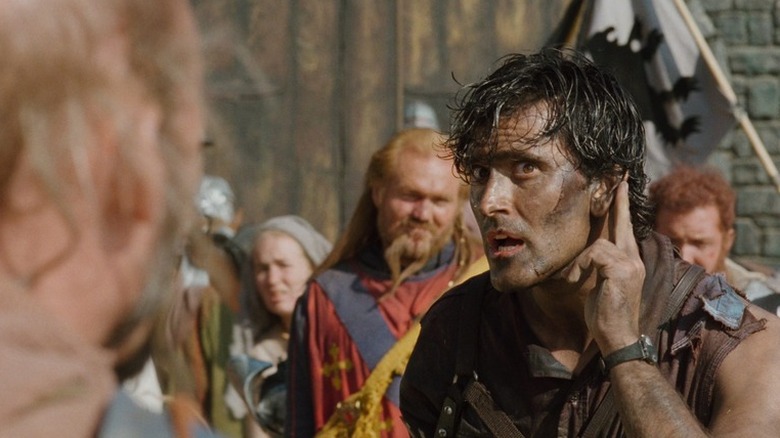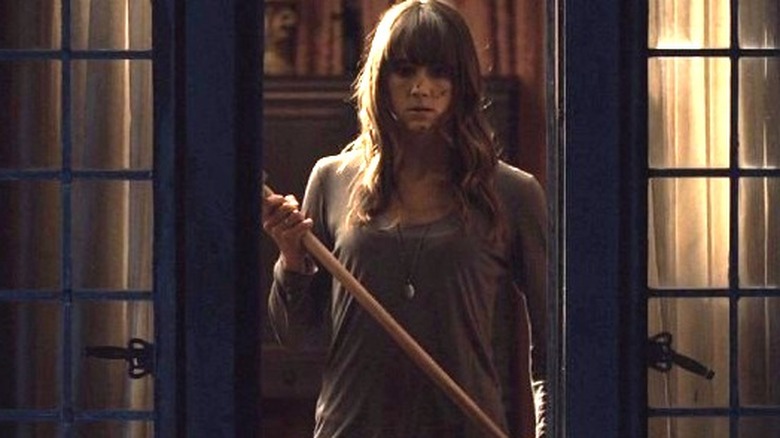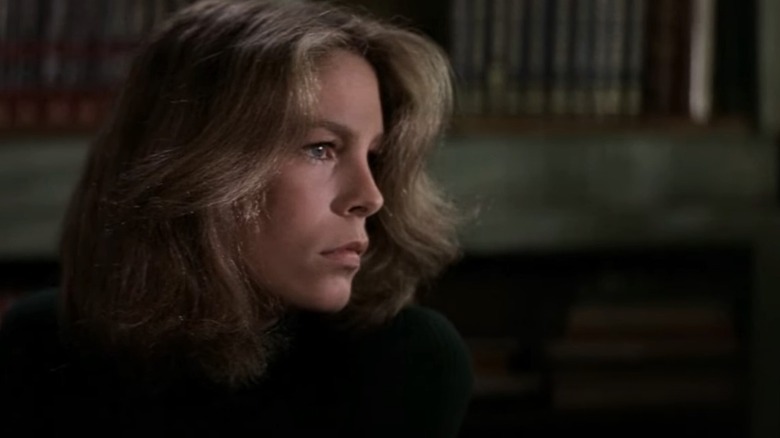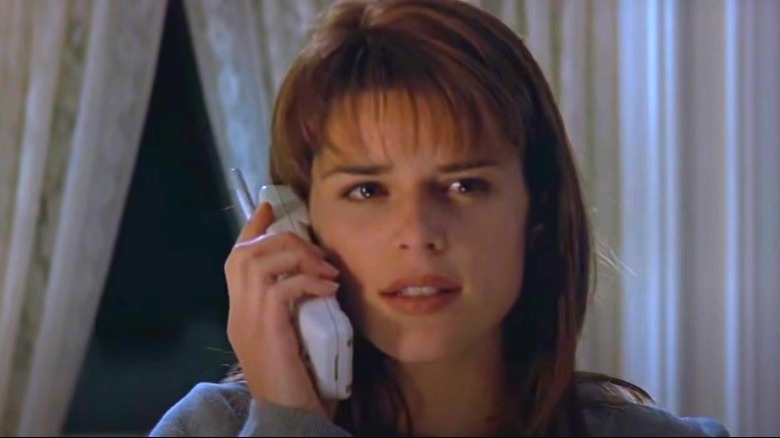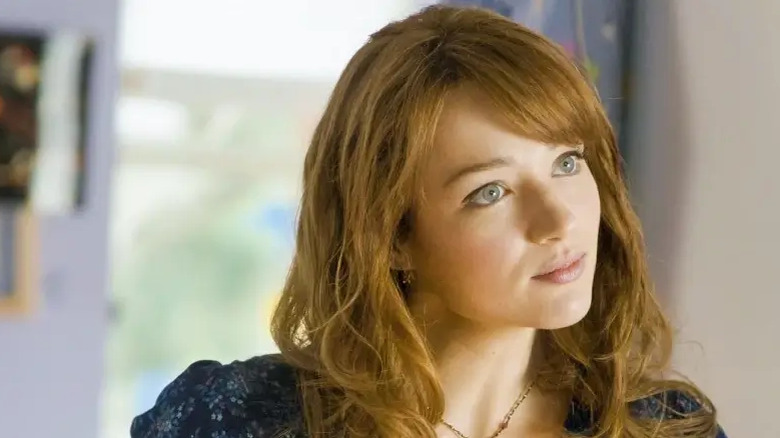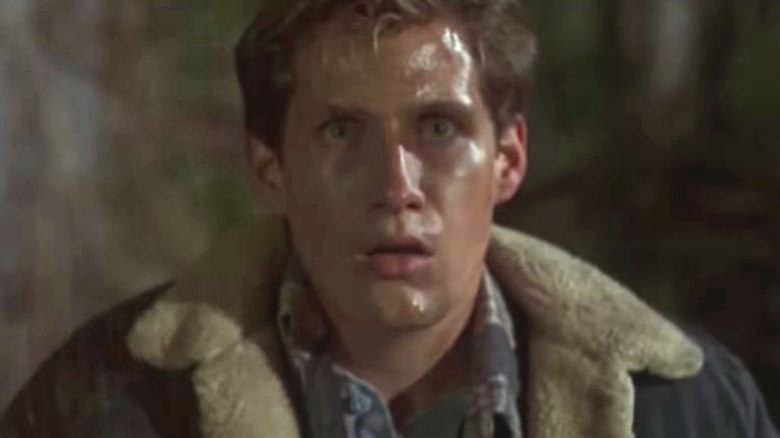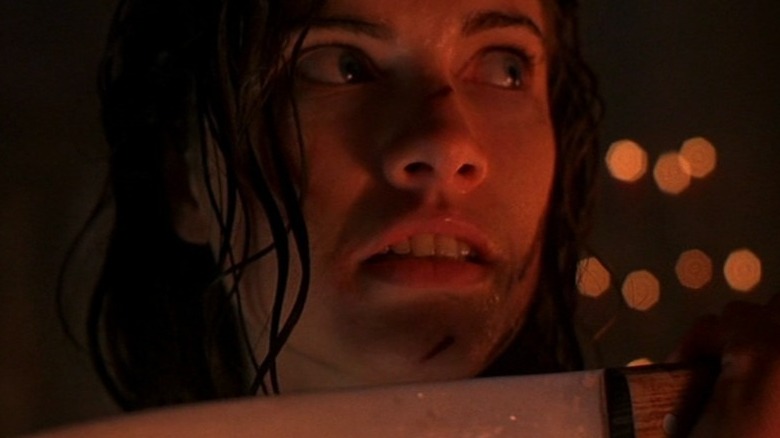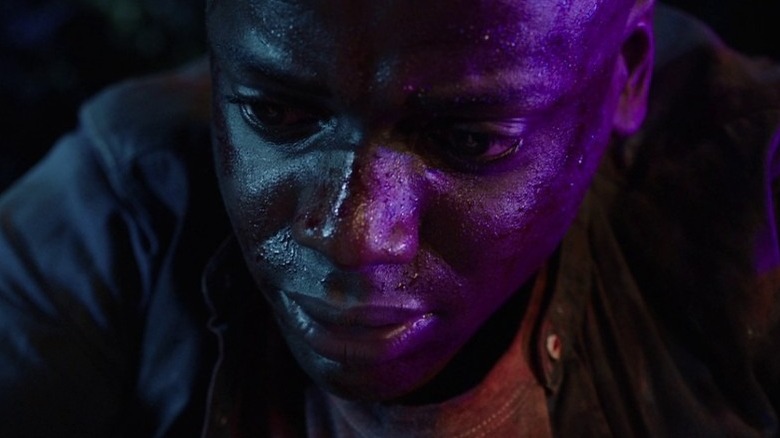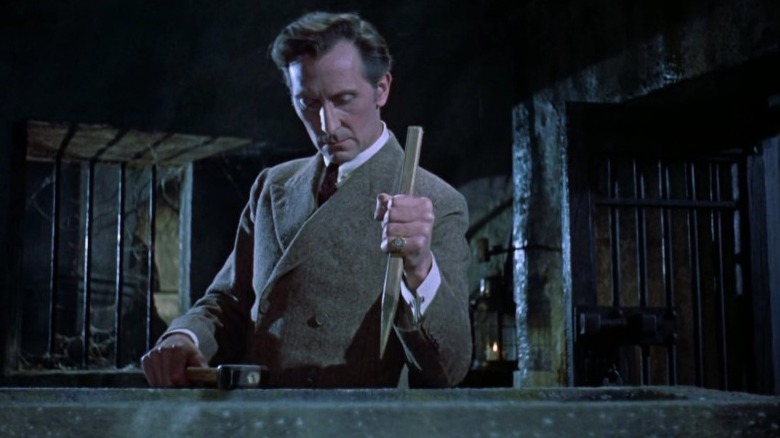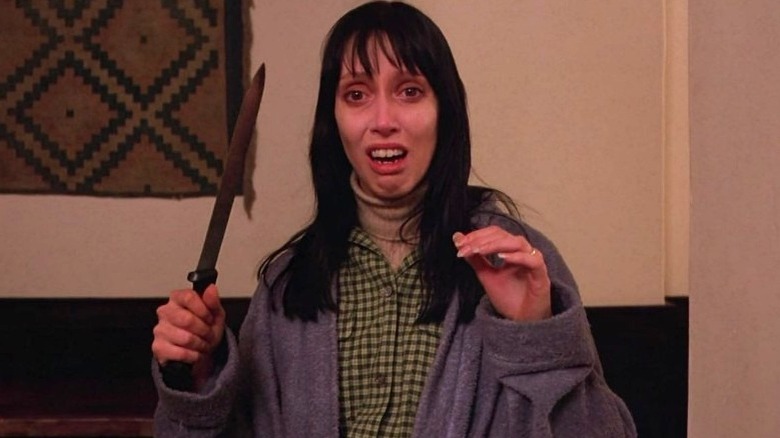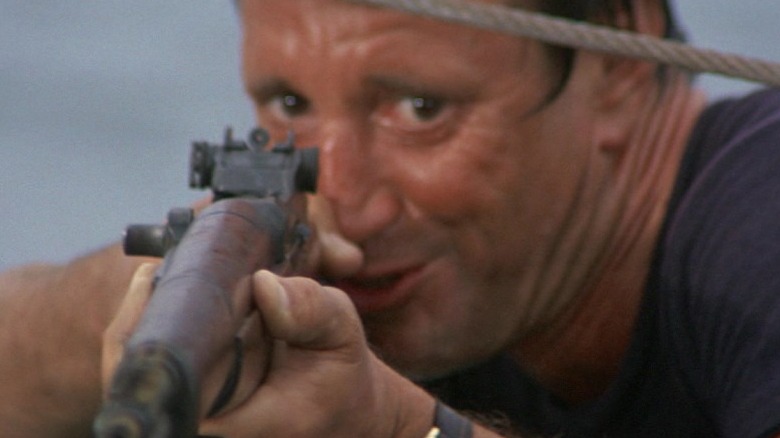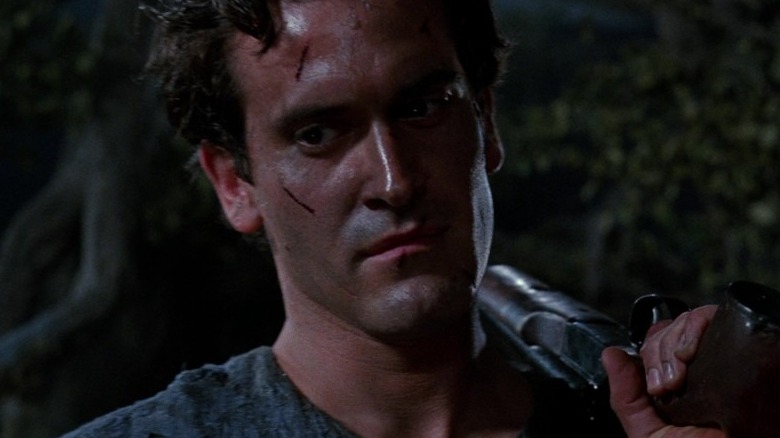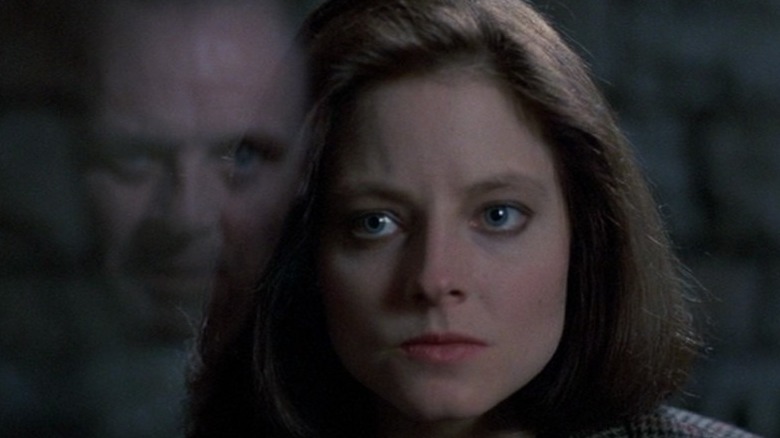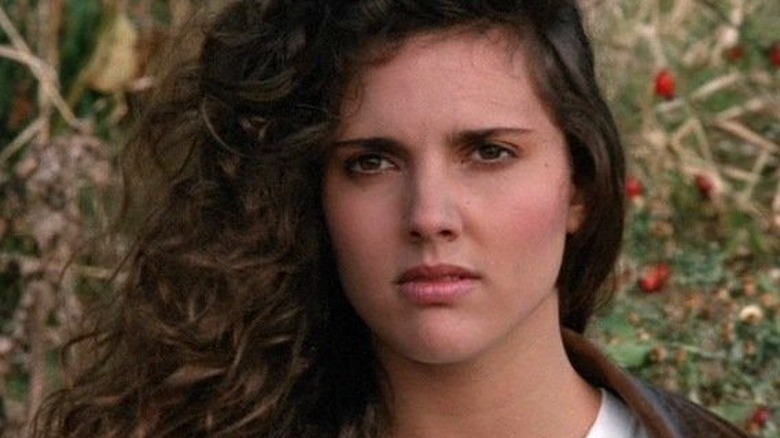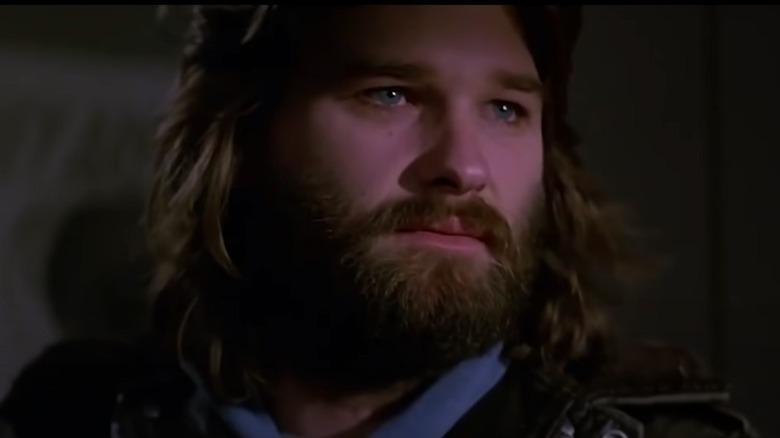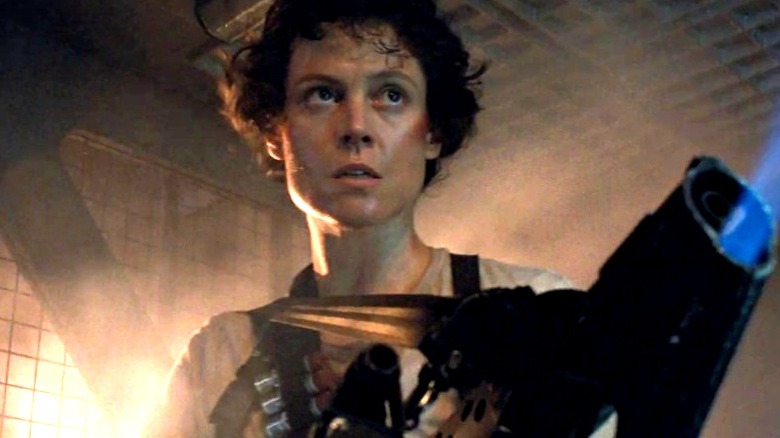The 15 Greatest Horror Movie Protagonists Of All Time
Every great villain needs a worthy opponent. Throughout cinematic history, horror audiences have found themselves living vicariously through the protagonists portrayed on screen. We follow their journey. We root for them. We get scared for them. We cheer for them when they ultimately conquer the movie monster and ride off into the sunset. Whether you're discussing the slow-burning torture of a psychological thriller or shielding your eyes from carnage candy in a slasher flick, you become emotionally invested in the lead character's arc in a way that is sometimes indescribable. You feel it in your gut.
In many ways, the horror genre is limitless. There are no rules. And what elicits a strong emotional response in one viewer may not in another. The same goes for selecting the greatest protagonists of all time. A list of the strongest and most tough-willed characters likely looks wildly different from one horror fanatic to another. In this list, some obvious choices were swapped out for those long-overdue for recognition. Even if you disagree, you can't argue with how wonderfully bountiful the horror genre truly is.
Erin — You're Next
I've always thought of Erin (Sharni Sinson) from Adam Wingard's "You're Next" as a natural extension of "Scream's" Sidney Prescott. While Sidney endures the death of her mother and many of her friends to rise triumphant, Erin learns how to survive by spending her childhood on a survivalist compound. The comparisons practically write themselves.
What sets Erin apart from (but on an equal footing with) Sidney is her ingenuity in the face of catastrophe. When the animal-masked killers show up shooting arrows through the windows, Erin rises to the occasion immediately and draws upon pure survival instinct. While everyone else is freaking out, she keeps her calm and barricades the house "Home Alone"-style and plots how to outsmart the intruders. As the stakes ratchet increasingly higher, Erin meets the killers' ferocious attacks with a brutality of her own. From placing a blender on one guy's head to beating another with a meat tenderizer, Erin is unflinching in her will to survive.
Sharni Vinson's performance is charming and electric. There are few final girls as capable as she is.
Laurie Strode — Halloween
John Carpenter and Debra Hill cemented the final girl archetype in the 1978 classic "Halloween." Laurie Strode (Jamie Lee Curtis) represents the girl next door — the shy, book-smart ingenue who faces death to find her strength. She learns through sacrifice and bloodshed that she always possessed the necessary willpower to fight back and survive. It's not until she witnesses the deaths of her friends Annie (Nancy Kyes) and Lynda (P.J. Soles) that Laurie undergoes this transformation.
As Laurie Strode, Jamie Lee Curtis (in her first film role) got the opportunity to play someone totally unlike herself. Curtis has said she's more like Annie and Lynda in real life, so the chance to stretch outside of her comfort zone intrigued her. With numerous timelines splintering off to create alternate realities all rooted in the same story, Laurie has been one of the few constants (along with Michael Myers and Dr. Loomis, of course) in the franchise.
Whichever timeline you prefer, Curtis portrays her strong-willed character with depth and range, particularly when Laurie fights back against the Boogeyman as she does in 1998's "Halloween H20: Twenty Years Later" or the most recent trilogy off-shoots "Halloween" and "Halloween Kills." With 2022's "Halloween Ends," Laurie will have appeared in seven films. Each installment has its own style and tone with Curtis adding new layers to the character — except in 2002's super-hip, tech-slasher "Halloween: Resurrection" which unceremoniously kills her off.
Laurie Strode is the grandmother of all modern final girls. It all starts with her.
Sidney Prescott — Scream
If you were to search for "final girl" in the dictionary, you'd see Sidney Prescott's (Neve Campbell) picture (or at least, you should). Her debut in Wes Craven's 1996 meta-slasher "Scream" came after decades of the genre's reliance on the sole survivor trope. From "The Texas Chain Saw Massacre's" Sally Hardesty to "Halloween's" Laurie Strode to Nancy Thompson from "A Nightmare on Elm Street," Sydney combines qualities from all the greats which came before but with a more modern and empowered edge. She possesses all the traits of the classic final girl. She's intuitive and smart, but she knows how to handle herself right from the beginning. For example, in her very first confrontation with Ghostface, she throws more than a few punches and survives.
Across five films, "Scream" has always been Sidney's story. Whether she's dealing with the discovery of a long-lost brother in "Scream 3" or tackling a new generation's hunger for fame in "Scream 4 or being pulled back into a murderous orbit against her will in 2022's "Scream," she's always up to the task. Neve Campbell nearly always delivers an effortless performance, offering up whatever raw emotion any given scene requires.
Dana Polk — The Cabin in the Woods
Dana Polk (Kristen Connolly) is woefully overlooked. In Drew Goddard's 2011 horror-comedy "The Cabin in the Woods," Dana is the obligatory (and specifically labeled) "virgin" of the cast. While poking fun at character archetypes and standard horror tropes, the film subverts every expectation. The set-up makes you believe what you're seeing is a run-of-the-mill slasher, but a series of shocking reveals exposes much larger satanic underpinnings.
Boasting a star-studded cast that includes Chris Hemsworth and Jesse Williams, the film adheres strictly to the slasher genre 一 at first. When all hell breaks loose, quite literally, Dana fights tooth and nail for survival and emerges as a force to be reckoned with. Alongside stoner Marty (Fran Kranz), dubbed "The Fool," Dana combats unholy terrors and ghastly mutations of classic movie monsters ranging from a demon resembling "Hellraiser's" Pinhead to a group of masked killers that could have walked right out of "The Strangers." Despite the "The Cabin in the Woods'" terribly grim ending, Dana stands as one of the greatest horror protagonists of all time.
Tommy Jarvis — Friday the 13th
The "final boy' is a rarity in slasher movies. The sole survivor is most often a woman who either slays the monster herself or is saved by a stereotypical "white knight.
In the fourth entry of the "Friday the 13th" franchise, a young boy named Tommy Jarvis (Corey Feldman) becomes the main protagonist and eventually goes head-to-head with Jason Voorhees (Ted White). Tommy's sister, Trish (Kimberly Beck), proves to be a worthy final girl, taking more than a few pulverizing shots at the masked killer. Released in 1984, "Friday the 13th: The Final Chapter" is seen as the best installment of the series — and for good reason. It's packed full of gore, likable characters, and it has a bloody and satisfying third act.
In the following two sequels, 1985's "Friday the 13th: A New Beginning" and 1986's "Friday the 13th VI: Jason Lives," Tommy is recast with John Shepherd and Thom Mathews respectively. In the former, we find Tommy still reeling from the events of the fourth film and suffering from extreme PTSD. In the latter, Mathews delivers a wildly different performance filled with sheer determination to finally put an end to Jason's evil.
Tommy is both the nerd and the warrior inside all of us. He has a fascination with creating his own monster masks which obviously mirrors many viewers' own obsessions with horror movies. Above all, he possesses the will to survive at all costs.
Nancy Thompson — A Nightmare on Elm Street
You can't have a discussion about great horror protagonists without talking about the one and only Nancy Thompson (Heather Langenkamp). For crying out loud, she fought a sleep demon and won. Well, at least she did in the original "A Nightmare on Elm Street." Regardless of your feelings about Nancy's send-off in "A Nightmare on Elm Street 3: Dream Warriors" (it could have been more heroic, as far as I'm concerned), Langenkamp, at least, was able to return in Wes Craven's "New Nightmare" in 1994, a film that was a meta-slasher before meta-slashers were cool.
What makes Nancy so special is her intelligence. As she spirals further into sleep deprivation in the first film, she buys a book titled "Booby Traps & Improvised Anti-Personnel Devices." She's reached the end of her rope, and she readies for the inevitable conclusion, knowing that bringing Freddy Krueger (Robert Englund) out of the sleep world could come at a terrible price. Still, she's willing to pay it. In the heart-pounding finale, she equips her house with explosives and a trip wire-triggered sledgehammer. Talk about a true icon!
In "A Nightmare on Elm Street 3: Dream Warriors," we learn that Nancy has turned her trauma into a career as a licensed therapist, helping lids work through emotional trauma and sleep issues. In Langenkamp's final franchise appearance, she plays a fictionalized version of herself (rather than Nancy) but continues making smart decisions in her battle against Freddy.
Chris Washington — Get Out
Writer-director Jordan Peele shines a spotlight on the realities of racism in America in his feature directorial debut, "Get Out." In the film, Peele exposes this complicated problem through the lens of a psychological thriller.
When Chris Washington (Daniel Kaluuya) agrees to meet his girlfriend Rose Armitage's (Allison Williams) parents, their weekend getaway turns out to be a part of a ling-running ploy to entrap Black men and women and sell their bodies to the highest bidder. The Armitages own a lavish mansion that's attentively attended to by servants Georgina (Betty Gabriel) and Walter (Marcus Henderson). Upon first arriving, Rose's parents, Missy (Catherine Keener), a hypnotist, and Dean (Bradley Whitford), a neurosurgeon, make off-hand remarks about Chris and his relationship with Rose. An unwelcome, suffocating feeling hangs in the air.
Chris eventually learns the truth about the family. They've been participating in this sick, sadistic plot for decades, and he is simply their latest prey. Chris stands at the precipice of losing his life and, more importantly, his autonomy as a human being. Unbeknownst to his captors, he plugs his ears to avoid becoming hypnotized and fights back. Without a doubt, "Get Out" has one of the most fulfilling and triumphant endings in horror history.
Abraham Van Helsing — Dracula
Author Bram Stoker first introduced Professor Abraham Van Helsing in his 1897 novel "Dracula." In "Dracula," Van Helsing is called upon by a former student named John Seward to attend to close friend Lucy Westenra who has fallen ill with a mysterious sickness. Van Helsing surmises she is the victim of a vampire and instructs John and his compatriots on how to kill the creeping blood-sucker.
In the decades since, Van Helsing has been portrayed onscreen numerous times. A few of the most famous depictions include Edward Van Sloan in the 1931 Universal monster movie "Dracula," co-starring Bela Lugosi as the title character, Peter Cushing in the Hammer's 1958 adaptation "Horror of Dracula," starring Christopher Lee as the Count, and Anthony Hopkins in 1992's "Bram Stoker's Dracula" which featured Gary Oldman as the centuries-old vampire.
Van Helsing is the light to Dracula's darkness — a sliver of hope standing in the way of humanity's destruction. He is as unrelenting and merciless in his mission as the monster is in his thirst for blood.
The character has had an indelible influence on numerous other popular characters in cinema. For example, we see reflections of Van Helsing in Dr. Loomis from John Carpenter's "Halloween." Like Van Helsing, Loomis is a truth-seeker and destroyer of evil.
Van Helsing will stop at nothing to send Dracula back to the bowels of hell. After all, every great villain needs a bloody good archnemesis!
Wendy Torrance — The Shining
Based on Stephen King's 1977 novel, "The Shining" (directed by Stanley Kubrick) remains one of the most uncomfortable psychological horror films of all time. Soon after settling into the remote Overlook Hotel as winter caretakers, writer Jack Torrance (Jack Nicholson), his wife Wendy (Shelley Duvall), and son Danny (Danny Lloyd) endure a slow descent into madness. Jack loses his grip on reality and transforms into a bloodthirsty villain. Wendy is forced to deal with this devastating reality and save her son.
Duvall delivers an emotional, organic performance. However, the circumstances surrounding the film are terribly upsetting. While Duvall captures the sheer terror of the plot, her performance came at the price of her mental and emotional well-being. The film's 500-day shooting schedule was incredibly traumatic for Duvall. The fear on her face (especially in the baseball bat scene, which took a grueling 127 takes), sends chills down the spines of audiences even today. Rendering Jack unconscious will a well-placed blow, Wendy drags her husband's limp body into the storage freezer. Naturally, he doesn't stay trapped for long. Soon, he's chopping down Wendy's bathroom door in the film's most iconic sequence.
Through it all, Wendy perseveres, and she and Danny eventually ride off into the blizzard in a snowcat. As the credits roll, we're left with the memory of Jack's distorted face frozen in time and a calming sense of Wendy's well-earned survival. However, the real-life trauma lives on, making the character even more tragic and heroic.
Martin Brody — Jaws
Steven Spielberg's "Jaws" instilled a whole generation with a fear of the water. In the original 1974 novel on which the film is based, author Peter Benchley was partially inspired by the 1916 shark attacks that took place off the coast of New Jersey. He was also influenced by a 1964 news story about a fisherman named Frank Mundus catching a 4,500-pound shark.
In the film, a series of bloody shark attacks leads police chief Martin Brody (Roy Scheider) to team up with marine biologist Matt Hooper (Richard Dreyfuss) and professional shark hunter Quint (Robert Shaw) to hunt down a monstrous great white.
Brody is a relatable everyman who always trusts his instincts. He will do anything to keep his family and the seaside community safe. In the heart-stopping finale, the shark takes a big bite out of the boat, leading to Quint's untimely demise. Brody manages to cram a scuba tank into the shark's gaping mouth, climbs up to the crow's nest, and fires his rifle at the tank. Bang! The shark explodes in a spectacular fountain of fishy chunks! As the boat sinks into the crashing waves, Brody and Hooper paddle off into the sunrise.
Ash Williams — The Evil Dead
Ash Williams (Bruce Campbell) is a reluctant hero in 1981's "The Evil Dead." In this cult favorite, writer-director Sam Raimi buys into the usual narrative of the sole survivor, positioning Ash as a hero by circumstance.
While vacationing at a remote cabin, Ash and his friends stumble upon the dreaded grimoire known as "Necronomicon Ex-Mortis." The cursed book's black magic conjures up the darkest and most diabolical of entities. One by one, they're possessed by the book's evil, leaving Ash to survive the night alone...
...Until the sequel, 1987's "Evil Dead 2." This second entry in the franchise acts as an alternate version of the first film before pushing into sequel territory. This time around, Ash is quicker on his feet as he actively battles the deadites. When his hand becomes possessed, he saws it off, laughing maniacally.
"Army of Darkness" sees Ash reach his full potential as a horror hero. After being transported back to medieval Europe, he goes on a crusade to relocate the flesh-bound book but accidentally jumbles an incantation, inadvertently summoning an undead army from the grave.
Ash returns in Starz's 2015 "Ash vs. Evil Dead" series. A sequel to the original trilogy, the horror-comedy finds Ash once again working at a local grocery store and spending his evenings getting drunk. With the help of his sidekicks Pablo (Ray Santiago) and Kelly (Dana DeLorenzo), he is forced to battle evil to save humanity before it's too late (again).
Clarice Starling — The Silence of the Lambs
Clarice Starling makes her first appearance in Thomas Harris' 1988 novel, "The Silence of the Lambs." In the 1991 film adaptation, Jodie Foster brings a commanding nuance to the role, and it's no surprise her performance earned her a best actress win at the Academy Awards. Tasked with interviewing imprisoned serial killer Dr. Hannibal Lecter (Anthony Hopkins), Clarice forges an unlikely relationship with the inmate — even sharing details about her childhood. Still, she keeps her cool in the face of unimaginable evil. With Lecter's help, she uncovers details about the identity of another killer named Buffalo Bill (Ted Levine).
Harris revisited the character in the 1999 follow-up, "Hannibal," which was also adapted for the screen in 2001. Directed by Ridley Scott, the film stars Julianne Moore as Clarice. Two decades later, Rebecca Breeds would take on the role in the CBS series "Clarice."
Clarice was a game-changing character who led to countless other strong, compelling depictions of women in film and television. How women were written and explored on-screen drastically changed throughout the mid-to-late '90s and into the new millennium. Among the strong woman to appear in Clarice Starling's wake are Dana Skully (Gillian Anderson) on "The X-Files," Olivia Benson (Mariska Hargitay) on "Law & Order: SVU," Marge Gunderson (Frances McDormand) in "Fargo," and Meredith Grey (Ellen Pompeo) and Christina Yang (Sandra Oh) on "Grey's Anatomy." And the list goes on and on.
Kirsty Cotton — Hellraiser
If you ever need help sending sadomasochistic demons back to hell, call up Kirsty Cotton. Played by Ashley Laurence in "Hellraiser," the character first makes an appearance in "The Hellbound Heart," the 1986 novella by acclaimed author Clive Baker on which the 1987 film s based.
In "Hellrasier," Barker's feature directorial debut, Kirsty's father, Larry Cotton (Andrew Robinson), and stepmother Julia Cotton (Clare Higgins), move into a two-story English home that was once owned by Larry's brother Frank (Sean Chapman). While moving furniture into the home, Larry cuts his hand, leaving a trail of blood in the attic that resurrects Frank. Still fancying the now-skinless Frank, Julia agrees to bring men back to the attic and kill them to revive her dead lover. Frank soon reveals the cause of his transformation: a mystical puzzle box. After being attacked by Frank, Kirsty solves the puzzle box and conjures up the leather-clad demons known as the Cenobites. The lead Cenobite, commonly known as Pinhead (Doug Bradley), has "such sights" to show Kirsty and commands his followers to drag her back into their world. However, Kirsty has a quiet determination and unwavering willpower. She eventually is victorious in driving off the Cenobites.
Kirsty makes three more appearances in the saga: in "Hellbound: Hellraiser II" (1988), "Hellraiser III: Hell on Earth" (1992), and in 2002's "Hellraiser: Hellseeker."
R.J. MacReady — The Thing
John W. Campbell Jr.'s 1938 novella "Who Goes There?" was first adapted for film in 1951 as "The Thing from Another World," starring Margaret Sheridan and Kenneth Tobey. Genre master John Carpenter returned to the original source material with his own reimagining, offering up a very different perspective with 1982's "The Thing" with Kurt Russell in the lead role.
In "The Thing," R.J. MacReady (Russell) is a chopper pilot assigned to an Antarctic research outpost. After investigating the crash of a helicopter from a neighboring Norwegian base, the researchers discover that one of their dogs is not what it seems. Soon, the outpost is under an insidious onslaught from a shape-shifting alien entity. MacReady's intuitiveness in picking up cues from the space creature proves to be most crucial to his survival. Even as others in his group turn on him, he keeps a cool head, fights the freezing cold, and ultimately wins back their trust. He adapts as swiftly as the otherworldly life form, so it's no surprise many genre fans have an attachment to the character.
The movie's ending is one of the most ambiguous in horror history, but I like to believe MacReady destroyed the alien and saved all of humanity. Of course, as in the Carpenter-produced horror classic "Halloween III: Season of the Witch," the grimmer interpretation is perhaps more interesting.
Ellen Ripley — Alien
In the horror and sci-fi worlds, Sigourney Weaver is synonymous with the rifle-toting Ellen Ripley. "Alien" and the James Cameron-directed sequel "Aliens" busted the binary, swapping out traditional gender roles and giving women power over the narrative. At a time when women were often cast as hapless victims, Ripley was a breath of fresh air.
In the first film, the spaceship Nostromo is invaded by an unknown entity. This otherworldly creature methodically picks off the crew members, leaving Ripley as the last survivor. To kill the monster, she sets the Nostromo to self-destruct. However, the creature stows away on her shuttle. Ripley is able to escape by the skin of her teeth by forcing the alien out of an airlock.
The 1986 sequel jumps ahead 57 years and follows Ripley after she's awakened from her stasis. Having firsthand knowledge of the creature, she's tasked to mount a rescue mission to an Earth colony on LV-426 that has been overrun by aliens.
It's worth noting that Weaver's performance in "Aliens" resulted in her first-ever Academy Award nomination for best actress. It's still a rare occurrence when the Academy recognizes horror or sci-fi, so to have Ripley immortalized in such a way is significant.
